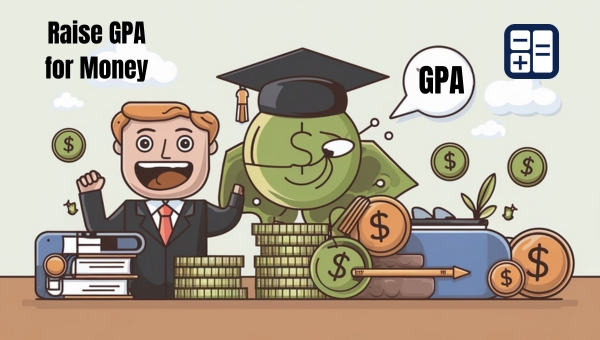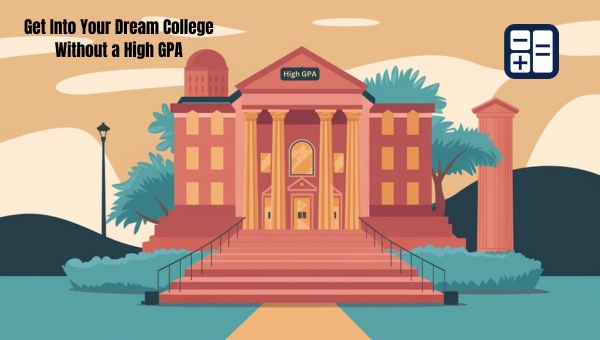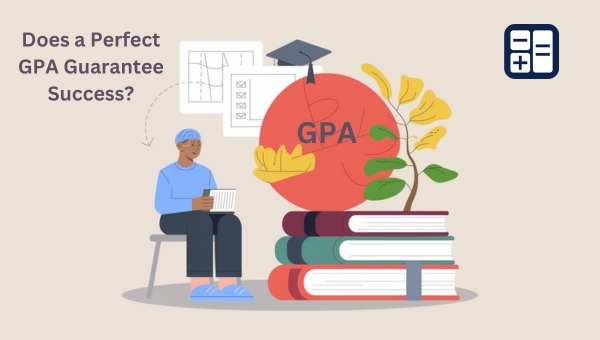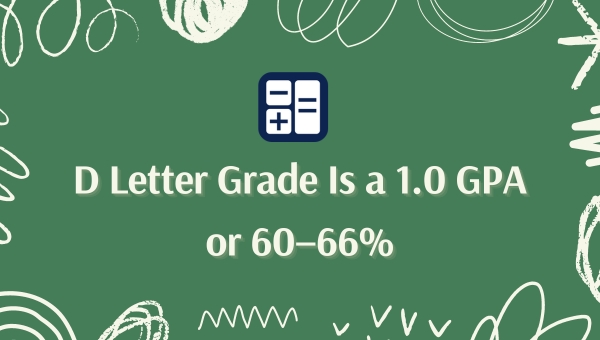3.3 GPA Equals to 87-89% Percentile Grade or B+
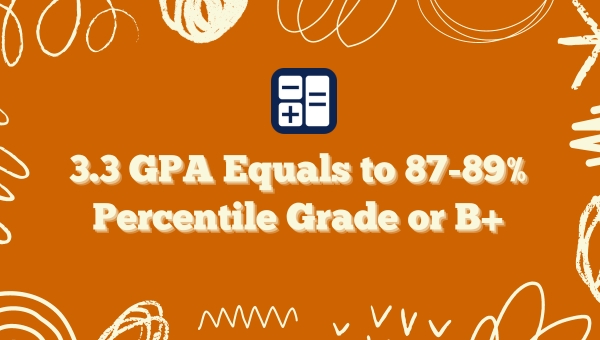
You’re probably aware that a 3.3 GPA translates to an 87-89% percentile grade, often seen as a B+. But have you considered what this means for high school students aiming for college or scholarships? Understanding the impact of a 3.3 GPA can be crucial for academic planning and future opportunities.
You might be wondering how to achieve or even raise this GPA quickly. Let’s explore practical strategies and insights to help you or someone you know excel academically and make the most of this solid performance metric.
What is a 3.3 GPA?
A 3.3 GPA, often considered above average, translates to a B+ on most grading scales. You’re probably wondering what exactly this means in a practical sense.
Essentially, a 3.3 GPA indicates that you’ve been earning grades that fall within the 87-89% range. This GPA shows consistent effort and a solid understanding of your coursework.
In terms of letter grades, a 3.3 GPA means you’re likely receiving more B+ grades than anything lower. It also demonstrates that you can handle your academic responsibilities well, even if you’re not necessarily acing every class. This kind of GPA is impressive and can open doors to various opportunities.
When it comes to college applications, a 3.3 GPA can be competitive, especially when paired with strong extracurriculars and good standardized test scores. It shows admissions officers that you have the capability to thrive in a rigorous academic environment.
In the workplace, a GPA of this level can signal to potential employers that you possess a good level of discipline, intelligence, and consistency.
What does a 3.3 GPA mean for high school students?
With a 3.3 GPA, you might wonder how it affects your college options. You can consider safety schools where your GPA exceeds the average admitted student’s, target schools where it aligns closely, and dream schools where it might fall below but other strengths could compensate. Understanding where your GPA stands helps you plan a balanced college application strategy.
Safety Schools
When you’re evaluating potential safety schools, a 3.3 GPA can play a significant role in your decisions. This GPA, which equates to an 87-89% percentile grade or a B+, indicates solid academic performance and opens up various opportunities for you.
While it mightn’t position you for the most competitive schools, it certainly makes many reputable institutions attainable.
To effectively identify suitable safety schools, consider these steps:
- Research Admission Statistics: Look for colleges where the average admitted GPA is around or below 3.3. These schools will likely view your application favorably, increasing your chances of acceptance.
- Consider Acceptance Rates: Aim for schools with higher acceptance rates. Institutions with acceptance rates above 60-70% typically accommodate a broader range of GPAs, making them good safety options.
- Evaluate Academic and Extracurricular Fit: Ensure the school offers programs and activities that align with your interests. Just because it’s a safety school doesn’t mean you should compromise on your desired college experience.
Target Schools
Having identified potential safety schools, it’s time to focus on target schools where a 3.3 GPA positions you competitively. With a GPA of 3.3, you’re often right in the middle of the applicant pool for many institutions.
These schools are neither too easy nor too difficult to gain admission to, making them ideal choices if you want a balanced list of options. To maximize your chances, consider schools that typically accept students with GPAs in the 3.0 to 3.5 range.
Here are three key steps to identify your target schools:
- Research School Profiles: Look at the average admitted GPA for schools you’re interested in. Many universities publish this information on their admissions pages.
- Consider Other Factors: Schools might also weigh extracurricular activities, personal statements, and recommendation letters. Make sure your application is well-rounded to enhance your chances.
- Visit or Contact Schools: If possible, visit campuses or reach out to admissions officers. This can give you insights into what the school values in its applicants and whether it’s a good fit for you.
Dream Schools
Dreaming big is a natural part of the college application journey, and a 3.3 GPA doesn’t have to hold you back from aiming for top-tier schools.
It’s important to remember that admissions committees look at more than just your GPA. They consider your extracurricular activities, leadership roles, personal essays, and letters of recommendation.
Here’s how you can make your application stand out:
- Excel in Extracurriculars: Showcase your passion and dedication through clubs, sports, volunteer work, or part-time jobs. Highlight any leadership positions you’ve held to demonstrate your initiative and commitment.
- Write a Compelling Essay: Your personal statement is your chance to tell your unique story. Focus on experiences that have shaped you and illustrate qualities like resilience, creativity, and determination. Make it memorable and authentic.
- Secure Strong Recommendations: Choose teachers or mentors who know you well and can provide detailed, positive insights into your character and abilities. Their endorsements can significantly bolster your application.
A 3.3 GPA doesn’t define your entire high school experience or your potential for success. By maximizing other aspects of your application, you can still aim for your dream schools and make a compelling case for your admission.
Proven Tips to Get a 3.3 GPA
To achieve a 3.3 GPA, focus on effective study techniques and strong time management skills.
Regular class attendance and active participation can also boost your grades.
Don’t forget to utilize campus resources like tutoring centers and study groups for extra support.
Effective Study Techniques
Achieving a 3.3 GPA is within your reach if you adopt effective study techniques tailored to your learning style. Start by identifying whether you’re a visual, auditory, or kinesthetic learner. Once you know, use tools that suit you best.
Visual learners can benefit from diagrams, charts, and color-coded notes, while auditory learners might find listening to recorded lectures or discussing topics with peers more helpful. Kinesthetic learners should incorporate hands-on activities and real-world examples.
Break down your study sessions into manageable chunks. Use the Pomodoro Technique: study for 25 minutes, then take a 5-minute break. After four cycles, take a longer break. This method keeps you focused and reduces burnout.
Active learning is crucial. Don’t just passively read your notes; engage with the material. Summarize information in your own words, teach the concepts to someone else, or create flashcards for quick reviews. Test yourself regularly to identify weak areas and reinforce your understanding.
Time Management Skills
Mastering effective study techniques can significantly boost your GPA, but pairing these techniques with strong time management skills will set you on the path to achieving a 3.3 GPA.
Start by creating a detailed weekly schedule. Allocate specific times for studying, attending classes, and completing assignments. This helps you stay organized and ensures you’re consistently dedicating time to your studies.
Break down your tasks into manageable chunks. Instead of cramming the night before, study a little each day. Use tools like planners or digital apps to keep track of deadlines and important dates. Prioritize your tasks based on deadlines and importance to avoid last-minute stress.
It’s also crucial to eliminate distractions. Find a quiet study space, turn off notifications on your devices, and focus solely on your work during study sessions. Use techniques like the Pomodoro method—25 minutes of focused work followed by a 5-minute break—to maintain concentration.
Lastly, don’t forget to take care of yourself. Adequate sleep, regular exercise, and proper nutrition can enhance your productivity and focus.
Regular Class Attendance
Regular class attendance plays a pivotal role in securing a 3.3 GPA. When you attend classes regularly, you’re more likely to grasp the material, understand the nuances of the subject, and stay updated with any changes in the syllabus or important announcements. Your presence in class demonstrates commitment and can positively influence your professors’ perceptions of you.
Attending class allows you to engage directly with the instructor and your peers. You can ask questions, clarify doubts, and participate in discussions, which reinforces learning. Even if you take good notes, nothing replaces the insights you gain from being present during lectures and discussions. These interactions often offer context that textbooks and recorded lectures can’t provide.
Furthermore, many courses allocate a portion of the final grade to attendance and participation. Skipping classes could mean missing out on these easy points. Consistent attendance also helps you build a routine, making it easier to keep up with assignments and study sessions.
Lastly, being in class regularly provides you with a structured environment, reducing procrastination and helping you stay focused on your academic goals. In short, regular attendance is a simple yet effective strategy to achieve and maintain a 3.3 GPA.
Active Participation Strategies
Engaging actively in your classes can significantly boost your GPA, aiming for that 3.3 you’re striving for. Start by asking questions during lectures. This not only clarifies your doubts but also shows your professors that you’re genuinely interested.
It can even lead to better rapport with them, which might be beneficial during grading.
Participate in class discussions. Sharing your insights or responding to classmates’ points can deepen your understanding of the material. It also keeps you engaged, making it easier to retain information.
Take notes actively. Don’t just transcribe; instead, summarize key points, jot down questions, and highlight anything you don’t understand. Later, you can review these notes and seek clarification as needed.
Form or join study groups. Collaborating with peers allows you to gain different perspectives and fill in gaps in your knowledge. Teaching others is also a great way to reinforce your own learning.
Utilizing Campus Resources
While active participation in classes plays a vital role in boosting your GPA, leveraging campus resources can further enhance your academic performance. Start by visiting the academic advising office. Advisors can help you plan your courses strategically, ensuring you meet all requirements while balancing your workload.
Next, make the most of the library. It’s not just a place to study; it’s a treasure trove of academic journals, databases, and research materials that can be invaluable for your assignments and projects. Don’t hesitate to ask librarians for assistance in navigating these resources.
Utilize tutoring services offered on campus. Whether you’re struggling with a specific subject or just want to reinforce your understanding, tutors can provide personalized help. Many campuses also offer writing centers where you can get feedback on essays and papers, helping you improve your writing skills and grades.
Join study groups. Collaborating with peers can offer new perspectives and problem-solving techniques you mightn’t have considered. It also fosters accountability and keeps you motivated.
How to Raise Your GPA Fast?
Raising your GPA quickly might seem daunting, but with a strategic approach, you can see significant improvements in a short amount of time.
First, prioritize your classes. Identify which courses impact your GPA the most and focus on excelling in those. Use your syllabus to understand the weight of each assignment and exam.
Next, manage your time effectively. Create a study schedule that allocates specific time slots for each subject. Use techniques like the Pomodoro method to maintain focus and productivity.
Don’t hesitate to seek help. Utilize office hours to ask professors for clarification on topics you find challenging. Form study groups with classmates to gain different perspectives and insights.
Improve your study habits. Active learning techniques such as summarizing information, teaching others, and using flashcards can enhance retention.
Also, take care of yourself. Adequate sleep, a balanced diet, and regular exercise can significantly boost your cognitive functions and overall performance.
Lastly, consider retaking classes where you earned low grades. Many institutions allow grade replacement, which can substantially raise your GPA.
Conclusion
Achieving a 3.3 GPA shows you’re committed and capable of handling complex material. It opens doors for college admissions, scholarships, and future job prospects. Keep striving, and use proven tips to maintain or raise your GPA.
Remember, consistent effort and engagement are key to academic success. Stay focused, and you’ll continue to reap the benefits of your hard work. Aim high, and don’t settle—your potential is limitless!
